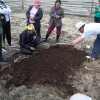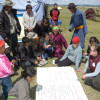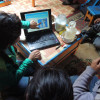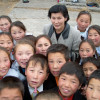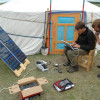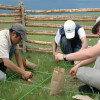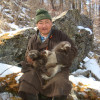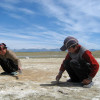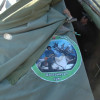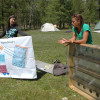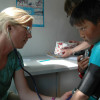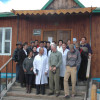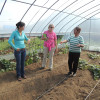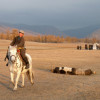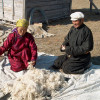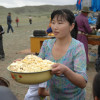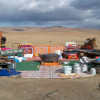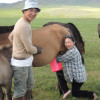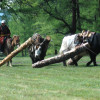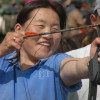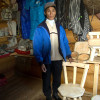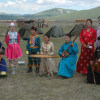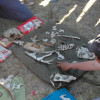BioRegions uses the Holistic Management process to learn about the environment and culture of a bioregion and to plan and conduct collaborative projects in the Program Focus Areas of Education, Environment, Health, Sustaining Local Economies, Traditional Knowledge, and the Arts. The Holistic Management plan can guide simultaneous projects in these Program Focus Areas to make progress towards the ideals expressed by the participants themselves.
Whole Community
Developing Our Common Vision
BioRegions promotes development of ‘whole communities’ where awareness and stewardship of environmental, social/cultural, economic, and infrastructure resources contribute to a community where democratic principles of participation, transparency, and civic opportunity help to stimulate initiative and creativity leading to rich and productive lives where people have opportunities to satisfy their quality of life values.
Education
Sharing knowledge and skills, developing wisdom, moving towards understanding
In Mongolia, BioRegions supports projects to increase education capacities of schools and communities. In Renchinlhumbe soum of the Darkhad Valley in Khuvsgul aimag, BioRegions sponsored the first ger schools, and provided teacher training in collaboration with Boojum Expeditions. An annual student literature and art contest provided essays and artist paintings for the Visions of the Blue Valley book.
The BioRegions Scholarship Program provides matching funding for Mongolian students from communities where BioRegions works. The program supports students accepted to either university or technical occupation programs and makes funds available for an entire degree or occupational program as long as the student is making progress.
The BioRegions Fellowship Program supports graduate student research. BioRegions Fellowship recipient Badmaa Dovchin completed her Master’s Degree in 2014 through a Fulbright Foreign Student Program Scholarship.
Environment
Caring for and improving our home place
BioRegions believes that a biologically complete, non-polluted, and well-functioning environment is essential for healthy people. Environmental management and improvement projects In the Darkhad Valley have included:
- Sand dune demonstration project (fencing a sand dune to demonstrate effects of overgrazing on stabilizing vegetation, and using wind breaks and wood debris to slow sand dune encroachment and re-vegetate source areas). In 2007 Austin Allen and Patrick Lawrence characterized the vegetation and surface condition of a typical sand dune and its source area.
- Water quality demonstration project: Loren Barber measured water quality of many source areas and found that fecal coliform bacteria are the main contaminants. She demonstrated that an adequate length of time for boiling the daily tea can eliminate this contamination for drinking water
- Reindeer browsing: Teki Tsaagan Sankey demonstrated that reindeer browsing can enhance shrub vigor by reducing accumulation of previous year’s growth
- Ecotone shift and grazing: In the Darkhad Valley, Siberian larch tends to encroach into grasslands during periods of warmer temperatures and less grazing pressure (cattle and sheep in contrast to goats). Read the study »
In one study area in the Darkhad Valley, socialist period collective grazing by a few, large, and highly managed herds of sheep, has been replaced by many smaller private herds of multiple species. The stocking rate is three times what it was during the socialist collective period, and rangeland biomass has decreased. This decrease may accelerate without efforts to decrease the stocking rate and implement more controlled grazing practices. Read the study » - Darkhad Valley moss species: Enkhjargal, E., moss biologist at the Mongolian Institute of Botany, identified 158 moss species within the Darkhad Valley. Forty-two are new to the Khuvsgul region and 2 are new to Mongolia. The samples are stored in the herbarium of the Institute of Botany.
- Salty Plant ‘hujir’: Loren Barber analyzed the natural ‘hujir’ salt which is traditionally used by Darkhad people and their animals as a main source of salt. Chemical analysis found high amounts of arsenic, fluoride, nitrate, antimony, and lead. Read the study »
Subsequently, Natsuko Hamamura and her colleagues examined the molecular biological and documented a diversity of biological ‘arsenic transformation pathways’, suggesting that the indigenous microorganisms present may transform arsenic into a biological form which does not accumulate in ways which are harmful to people and animals. Read the study » - Watershed stability, grazing and pasture management study: Badmaa Dovchin’s Master’s thesis documented one example in Orkhon soum of Bulgan aimag which showed that high stocking rates may have reduced pasture and soil quality.
Health
Taking care for people and animals
The vision for the BioRegions Health Program in Mongolia is to have a vigorous and sustainable exchange between Montana and Mongolia which builds capacity and capability for citizens to lead healthy lives. The objectives are 1) to identify critical weak links in the health care systems of both regions, and demonstrate sustainable prototype solutions to strengthen them, 2) to provide experiential learning and training opportunities for health care students and professionals, and 3) to demonstrate and provide community health education in conjunction with related programs dealing with environment, traditional knowledge, and entrepreneurship.
BioRegions contributes to the health of people and animals in Mongolia by collaborating with local, aimag, and national health practitioners and educators in a series of actions designed to make immediate positive differences while also building long-term capacities. The BioRegions health team consisting of local doctors and nurses, Mongolian and US medical students, and a third-year resident doctor from the Montana Family Residency program of Riverstone Health in Billings, Montana, has provided simple health screenings and consultations for 1200 rural residents in Khuvsgul and Bulgan provinces. The team has provided 6 annual trainings for local ‘bag’ doctors (similar to physician’s assistants) in the Darkhad Valley, and 2 in Orkhon soum. In 2014, the health team included nursing professionals and students.
BioRegions also offers opportunities for physicians to share their specialties with rural and urban Mongolian doctors through connections in three provinces and the National Medical University in Ulaanbaatar.
The traditional herding culture of rural Mongolia depends on healthy pasture and healthy animals. In 2014, veterinarians Dr. Shannon Moreaux of the MSU Animal and Range Sciences Department and Dr. Peter Heidmann of Montana Equine Medical & Surgical Center visited Orkhon soum with BioRegions to initiate veterinary science programs dealing with preventative health care and animal training. We anticipate this will become an annual activity involving MSU pre-veterinary students.
Sustaining Local Economies
Developing the entrepreneurship outlook and skills for successful communities and organizations
Countryside Mongolia is full of enterprises to support human needs, from family-scale herding to retail trade, tourism, resource extraction, education, government administration, and infrastructure development and maintenance. The entrepreneurship approach to organizing and accomplishing can provide strength for many endeavors, from private business to community enterprises such as cooperatives and municipal or other government projects.
Business professors and students from the Montana State University College of Business consult with countryside businesses to improve their operation.
The BioRegions business team is ready to collaborate with enterprises in Mongolia to support community-based conservation along with environmentally and culturally sensitive development.
Traditional Knowledge
Practicing the fundamental knowledge of the culture
Mongolian culture is rich in tradition. The knowledge and skills honed and passed from generation to generation remain as key components of Mongolian life. In addition to the environment of vast countryside Mongolia, the deeply imbedded cultural traditions and skills provide the backbone for rural life. These common traditions, the relation to the natural environment, and the skills needed to live in the Mongolian country-side connect most urban Mongolians with their countryside roots, and more often than not, relatives still living there.
The Traditional Skills and Knowledge Program supports the utilitarian skills needed to handle animals and provide for food, clothing and shelter. The BioRegions ARTISAN PROGRAM encourages training and marketing support for herders, homemakers, craftspeople like blacksmiths, ger makers, furniture makers, wool felt makers and clothing makers. Participants use traditional materials and design, but also evolve their crafts with modern materials and contemporary designs.
The 2002 National Geographic expedition by photographer Gordon Wiltsie documented the traditional migration from fall to winter camps as practiced without wheeled vehicles or any mechanized assistance. This is explained in the 2003 November issue of National Geographic with an article titled Mongolian Crossing.
Traditional medicine and wellness practices were subdued during the Socialist Period. BioRegions encourages traditional medicine practitioners to share their knowledge through publication. Wellness practices are becoming increasingly popular as people remember there is more to life than one’s job.
Another component of traditional skills and knowledge is the traditional relationship with Nature and subsequent spiritual practices found in shamanism and Buddhism.
The Arts
Human expression to bring us together, chronicle our journey, share our varying backgrounds and viewpoints, and honor the emotion in our lives
Self-expression and communication of Mongolia’s life styles, histories, and the joy and sadness of life have provided fabric for a people often subject to domination by neighboring cultures and political regimes. Many of these expressions involve Traditional Knowledge and Skills, but with human expression as the media. BioRegions encourages practice of traditional arts through the annual Festival of the Darkhad Blue Valley, which showcases heartfelt, but now necessarily professional level, expression of traditional painting, sculpting, instrumental music, song, dance, and poetic oratory.
